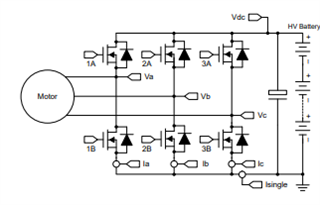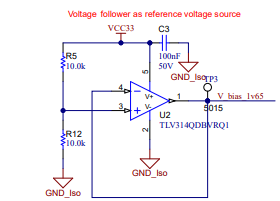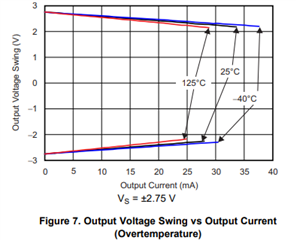Other Parts Discussed in Thread: TLV314
Hello,
To read the current of each phase in motor drive application, shown in figure 1 (Ia, Ib, Ic), an offset voltage of 1.65V is created using TLV314.This is due to the fact that the current is bidirectional and ADC can only read values between 0 and 3.3V.
My question is : can I use only one reference voltage TLV314 for three shunt measurements or I should use three separate TLV314?

Figure 1. motor drive circuit

Figure 2. offset voltage generator circuit
Regards,
Hadi






